Search Results for Tag: Renewables
Future 360 – Masdar revisited – in video!
During my trip to Abu Dhabi I met Sarah Backhouse, the founder of Future 360, which describes itself as “A media company and discovery platform dedicated to clear technology”. The idea is ” to use video to tell powerful stories about why cleantech matters”. There is a vey enthusiastic video portrait of Masdar city on the website. Fun to watch! And I admire how you get so much into such a short piece of video, Sarah.
NGOs at the World Future Energy and Water summits?
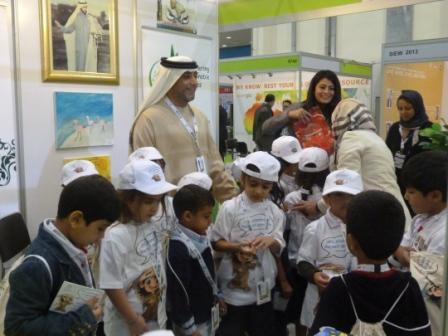
Smaller regional ngos like the Environment Friends Society, which focuses on educating women and children about environmental protection, were happy to talk about their activities here at the Abu Dhabi summit and exhibition. Chairman Dr Ibrahim Ali Mohamed and MD Angela Fandino
There are countries, companies and international organisations (UNEP, IRENA) galore exhibiting at the big hall here in Abu Dhabi. The only big international environment ngo with a presence appears to be WWF, which works together with EWS, the Emirates Wildlife Society. All the greater was my disappointment when I was refused entry to an official side event organised jointly by these two groups on the “Role of Renewable Energy in the GCC”. Since that is the main focus of my trip here, I was keen to get the WWF perspective on this. I was actually asked to leave the room, so wasn’t able to hear the representatives of UAE, Qatar, Saudi Arabia and Oman talk about their projects, chaired by Samantha Smith, the leader of WWF International’s Global Climate and Energy Initiative. Frustrating to have missed out on that opportunity, to which I had felt officially invited.
A climate-friendly future? Impressions of Masdar City
Today I paid a visit to Masdar City 17km from the centre of Abu Dhabi, set up in 2006 with the aim of being “one of the most sustainable cities in the world”, according to Masdar. Masdar was set up as a commercially driven renewable energy company and a strategic government initiative. The city is powered entirely by renewable energy and the buildings are designed to maximize energy efficiency.
This is an impression of the iconic architecture of Masdar around a pleasantly cool courtyard. (The modest gentleman on the couch is Sultan Aal Ali, in charge of Masdar’s development).
In the years since the vision of a sustainable, purpose-built city at the heart of a desert state was first launched, a lot of the enthusiasm seemed to have gone out of the project, at least in the view of a lot of media. That is one reason why I was keen to have a look at what is happening there today. I will be writing an article for our website on this in the next couple of weeks, so for today I’d just like to share some pictures, thoughts and impressions with you.
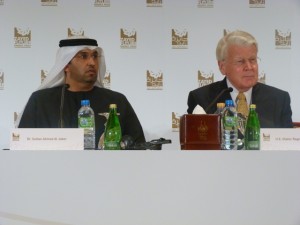
Dr. Sultan Ahmed Al Jaber, Director General of the Zayed Future Energy Prize with President Grimsson
Incidentally, as part of the World Future Energy Summit and at the ceremony announcing the 2013 Zayed Future Energy Prize here last night, the ICE connection was brought up again by the President of Iceland, Olafur Ragran Grimsson.
He was chairman of the prize jury and was talking about those connections between the record melt of the Arctic ice and the push for renewables here in the oil-rich Gulf region. Yes! The message seems to have arrived on the global stage.
Anyway, to Masdar City:
Using the sun to cool Masdar. Normally, air-conditioning would be one of the highest electricity-guzzlers and emissions producers. The architecture uses window-to-wall ratio, insulating building materials, shading and other means to keep buildings cool – and uses sun power to do the rest.
A modern version of a cooling wind-tower, to bring cold air to the courtyard. These towers have a long tradition in the region. They look great as well.
Hi-tech lab for nano-technology research at the Masdar Institute. The city is developing around the university complex.
This is the centre-piece of the brand-new 2nd phase of the Masdar Institute. The city is a work in progress. Today I was one of the first journalists to be allowed into the new development without safety helmet and boots for construction site safety.
Beautiful places, beautiful people! One of my guides from Masdar’s communications department against the background of a wall constructed from desert sand. Thanks!!!
Driverless public transport, using magnetic technology. Felt a little like sci-fi, but definitely got us across the complex. Not sure if it will catch on, but it was quite an experience.
I could go on all night, but will save the rest for a later date. There is plenty of building work going on. The German company Siemens will soon be moving in to its new headquarters in Masdar. Other companies are also planning to move in. The International Renewable Energy Association IRENA will ultimately have its headquarters here.
So far, students are the only residents. Seems a bit extravagant, which is one of the criticisms levelled at the eco-city in the past. But from what I saw today, things seem to be finally moving forward. EU Commissioner Connie Hedegard, who also visited Masdar today, told me Masdar was “leading by example”. She’s very positive about what’s happening in the region in terms of the growing interest in renewables. There’s a long way to go, she says – but stresses that applies to all of us.
Still seats available at this Masdar café today.
Green energy revolution in the Gulf?

Sustainable architecture – “Wendy”, a structure with a coating that cleans up the air when the sun shines, showcased in Abu Dhabi this week
“Everybody who’s anybody“in the world of renewables, climate and sustainability seems to be putting in an appearance here in the oil-rich emirate Abu Dhabi this week. Sustainability Week, as it’s dubbed, started off with a meeting of the International Renewable Energy Agency IRENA, which has its headquarters here. The announcement that China is applying for full membership this year was one of the highlights of the top-level meeting.
Today, at the start of the World Future Energy Summit, I’ve heard top-level speakers including French premier Francois Hollande, German environment minister Peter Altmaier, EU Climate Commissioner Connie Hedegard and others addressing the international audience (3,000 delegates, 30,00 visitors expected by the organizers in the course of the week). Germany in particular comes off very well, with people talking about the “Energiewende”, or energy transformation in progress there and the rapid development of renewable energy.
But the really fascinating thing for me is the feeling that the Gulf states seem to be getting serious at last about getting into renewables. There’s a lot of international interest in their motives. Abu Dhabi’s wealth, for instance, is clearly based on oil revenue. There is no sign that that is about to change in the near future. Use renewables at home to sell more oil abroad? Well, there is that.
But there is a clear interest in diversification of the energy supply and, of course, the economy. This region doesn’t want to miss out on the global move towards securing energy, water and food security by getting into renewables, (especially solar, for obvious reasons).  When it comes to emissions reductions, of course, there is still plenty of scope for debate, which is taking place here at the conferences on a regular basis, at all levels, from the stages to the coffee tables.
When it comes to emissions reductions, of course, there is still plenty of scope for debate, which is taking place here at the conferences on a regular basis, at all levels, from the stages to the coffee tables.
Sustainability is the buzzword this week – but is it just a buzzword?
Yesterday I visited Shams1, the world’s biggest single-unit CSP (concentrated solar power) plant, with a capacity of 100 MW, set to open very soon (although no-one was willing to confirm the actual date). It’s a huge project, with lines of mirrors as far as the eye can see. It could power 20,000 homes when it’s ready. Tomorrow, I’ll be having a look at Masdar city.
Qatar is also increasing its solar activities, as we’ve reported on DW recently. “Leading by example”, is how Hedegard described the Masdar initiative in her keynote.
But one of the most interesting issues today was a talk by Saudi Arabia’s deputy industry Minister Khalid al Sueiman about their targets for renewables. 30% of electricity generation by 2032 certainly sounds like a move in the right direction. So is the country once known as a key blocker of climate agreements and emissions reduction commitments turning over a new leaf? The motivation, the minister says, is to make the oil go further. The international media were pushing hard for more information from the Saudi expert. “We need encouragement, don’t push us too hard”, was an unofficial comment I heard from one of his aides.
I talked to Professor Jeffrey Sachs, renowned expert from the Earth Institute, Columbia University in the USA about this. He was giving a keynote speech here and launching the UN Sustainable Development Solutions Network (too hard to define right now).
He says he really does have the feeling positive things are happening here in the Gulf region.
The mega energy-event is sponsored by Exxon Mobile, incidentally. Oil companies preparing to shift to renewables? “I’ll believe it when I see it”, says Professor Sachs. But more on all that later. Things are certainly moving.
Polar bear in Abu Dhabi

Abdallah al Shami sees a clear connection between what happens in the Gulf and the melting Arctic – and vice-versa
Yes, the ice-blogger has indeed found a polar bear in Abu Dhabi. I was standing in front of ‘Wendy’, an eco-art creation by US-based artists and architects Marc Kushner and Matthias Hollwich, set up in downtown Abu Dhabi as part of Sustainability Week, when I was handed a magazine with a 3D picture of the climate impact icon, looking lost on a chunk of melting ice. Abdallah al Shami is the project editor of a spezial edition of the Abu Dhabi culture magazine Shawati in conjunction with Masdar to mark this week dedicated to sustainability, clean energy and water.
The picture showcases what our actions can do to the environment, he says. We can save it – or it will go. ‘We wanted to have a global message, not just address local issues’, says Abdallah. ‘With all the ice that has been melting in the Arctic, Abu Dhabi wants to address global issues and their interconnections’. And those connections between our actions anywhere in the globe and what’s happening in the Arctic are exactly why the ice blog is coming to you from this part of the world this week. Couldn’t have put it better myself, Abdallah.






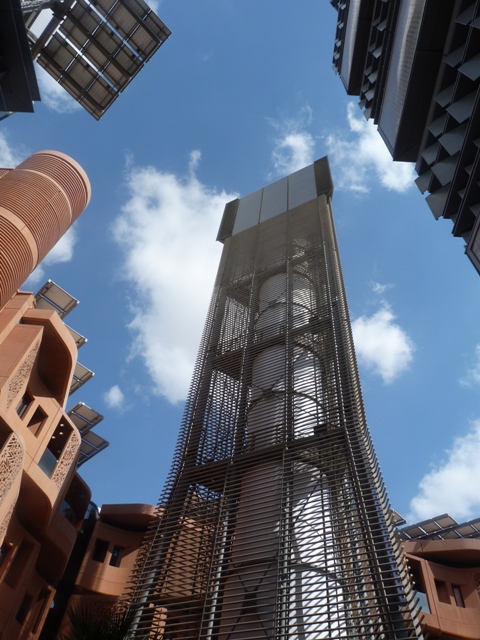

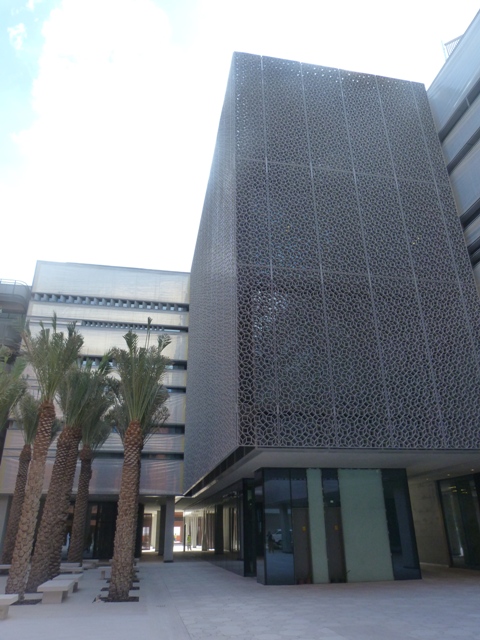
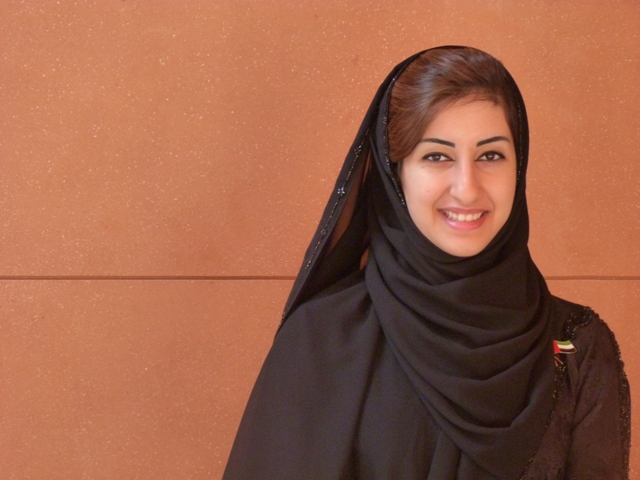
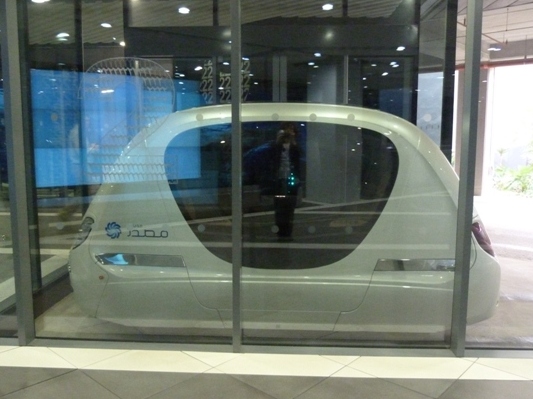
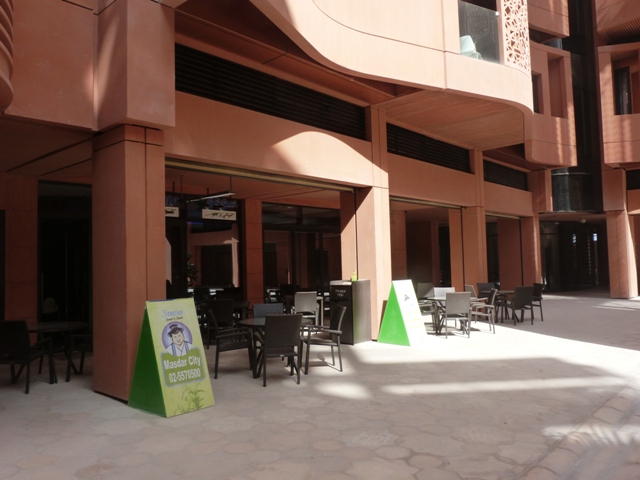


















Feedback